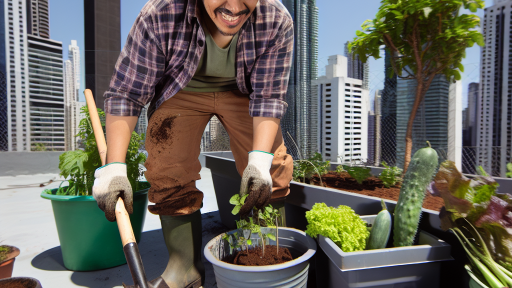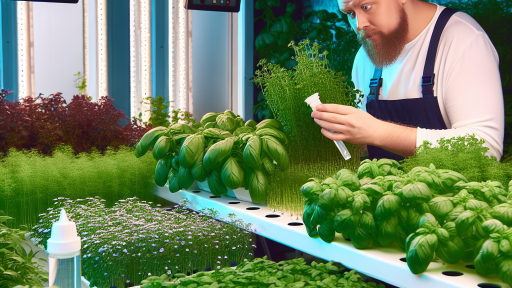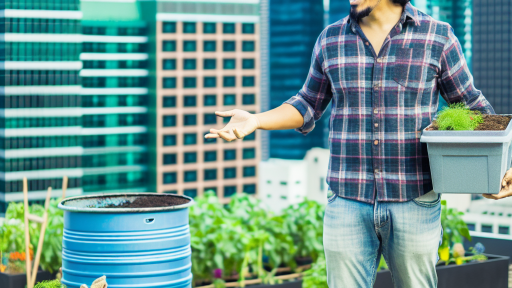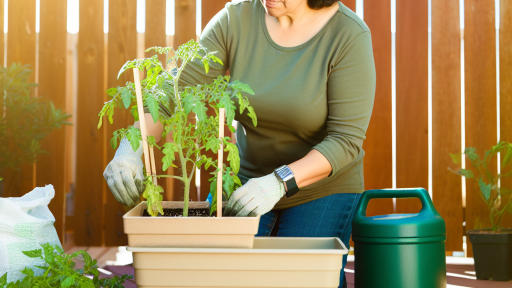Understanding the Importance of Container Choice in Farming
Impact on Plant Health
Choosing the right container significantly affects plant health.
The container’s size influences root development and nutrient uptake.
Additionally, different materials can impact moisture retention.
Plastic containers, for example, can heat up quickly.
Conversely, ceramic pots provide better insulation.
Hence, matching containers to plant needs is crucial.
Environment and Sustainability
Selecting eco-friendly containers promotes sustainable farming practices.
Biodegradable materials reduce environmental impact.
Using recycled materials also conserves resources.
Moreover, sustainable containers enhance farm image.
Cost-Effectiveness
Cost plays a vital role in container selection.
Investing in durable containers can save money over time.
Cheaper options may require more frequent replacement.
Balancing upfront costs with long-term savings is essential.
Convenience and Maintenance
Easy-to-handle containers simplify gardening tasks.
Transform Your Agribusiness
Unlock your farm's potential with expert advice tailored to your needs. Get actionable steps that drive real results.
Get StartedLightweight pots reduce physical strain during planting.
Furthermore, containers with drainage systems prevent waterlogging.
Maintenance becomes easier with containers designed for efficient use.
Evaluating Different Types of Containers: Pros and Cons
Plastic Containers
Plastic containers are lightweight and easy to handle.
Moreover, they are often less expensive than other materials.
However, they can degrade under UV light exposure over time.
Additionally, plastic may retain heat, which can stress some plants.
Clay Pots
Clay pots offer excellent breathability for plant roots.
They can also help regulate soil temperature effectively.
However, these pots are heavier and can crack easily.
Furthermore, they can be porous, leading to soil drying out quickly.
Metal Containers
Metal containers provide durability and a modern aesthetic.
They are resistant to cracking and breaking under various conditions.
On the downside, metal can heat up rapidly in sunlight.
This heat can damage plant roots if not monitored carefully.
Fabric Pots
Fabric pots encourage healthy root growth through aeration.
They are also lightweight and easy to move around.
A downside of fabric pots is that they can dry out quickly.
They may require more frequent watering than traditional pots.
Choosing the Right Container
When selecting a container, consider plant type and growth stage.
Additionally, evaluate your own space and environment.
Keep in mind that some plants thrive better in specific materials.
Moreover, think about where you will place the containers for optimal growth.
Size Matters: How to Choose the Right Container Size for Your Plants
Understanding Plant Growth Requirements
Plants have varying growth needs depending on their type.
Showcase Your Farming Business
Publish your professional farming services profile on our blog for a one-time fee of $200 and reach a dedicated audience of farmers and agribusiness owners.
Publish Your ProfileEach plant species has specific requirements for space and root development.
Research your plant to understand its growth habits better.
Evaluating Container Size
Container size directly affects plant health and growth rate.
Choosing the right size enables adequate root development.
A container too small limits root growth and water absorption.
Conversely, oversized containers can lead to waterlogging.
Typical Size Recommendations
Small plants often thrive in containers ranging from 4 to 6 inches.
Medium-sized plants generally prefer 6 to 12-inch containers.
Larger plants benefit from containers that are 12 inches or more.
Always consider the full-grown size of the plant before deciding.
Adjusting for Specific Plant Types
Certain plants require specialized container sizes for optimal growth.
Herbs typically grow well in compact containers.
Vegetables often thrive in larger containers to support their growth.
Flowers may vary; some prefer more space while others do not.
Transplanting: When Size Changes Matter
Transplanting into a larger container can invigorate plant growth.
Monitor your plant’s root system when it begins to outgrow its space.
Consider increasing the size gradually to prevent shock.
Also, timing your transplanting can significantly affect success.
Uncover the Details: Maintaining Soil Health in Heritage Farms
Material Options
Plastic Containers
Plastic containers offer versatility in plant farming.
They are lightweight, making them easy to handle.
Additionally, they come in various shapes and sizes.
However, consider their environmental impact.
Choose recyclable or high-density polyethylene options to minimize waste.
Clay Containers
Clay containers provide a natural aesthetic for gardening.
They offer excellent breathability for plant roots.
Moreover, they retain moisture well, aiding in hydration.
Nonetheless, clay can crack in extreme weather conditions.
Ensure proper care and maintenance to prolong their lifespan.
Metal Containers
Metal containers are robust and durable for farming plants.
These containers often have a modern look.
However, they can heat up quickly, potentially harming roots.
Consider lining metal containers to mitigate this risk.
Furthermore, check for rust resistance to ensure longevity.
Biodegradable Containers
Biodegradable containers are an eco-friendly option for planting.
They break down naturally, enriching the soil over time.
This choice supports sustainability in farming practices.
Nevertheless, they may not withstand harsh conditions for long.
Choose quality materials and monitor their durability.
Gain More Insights: Step-by-Step Mushroom Cultivation for Farmers
Showcase Your Farming Business
Publish your professional farming services profile on our blog for a one-time fee of $200 and reach a dedicated audience of farmers and agribusiness owners.
Publish Your ProfileDrainage Needs: Ensuring Proper Water Flow in Containers
Importance of Drainage
Proper drainage is vital for container gardening.
Excess water can lead to root rot and plant death.
Well-draining containers promote healthy plant growth.
Therefore, understanding drainage options is crucial.
Types of Containers and Their Drainage
Different containers offer varying drainage facilities.
- Terracotta pots absorb moisture, but dry out quickly.
- Plastic pots are lightweight and retain moisture longer.
- Wooden containers provide good drainage and insulation.
Each type has its pros and cons for drainage.
Features to Look For
Select containers with drainage holes for optimal water flow.
Additionally, consider the material’s porosity.
Some materials can hold moisture, affecting drainage.
Furthermore, raised containers can improve drainage capacity.
Enhancing Drainage Techniques
You can enhance drainage with various techniques.
- Add gravel or stones to the bottom of the container.
- Use a drainage layer of materials like landscape fabric.
- Mix perlite or vermiculite into the potting soil.
These methods ensure excess water leaves the container effectively.
Watering Practices for Healthy Drainage
Adjust your watering practices based on container type.
Monitor soil moisture levels regularly.
Water deeply but less frequently to avoid oversaturation.
Also, ensure containers do not sit in standing water.
Discover More: Seasonal Tips for Year-Round Mushroom Cultivation
Aeration and Root Health: The Role of Container Design
Understanding Aeration
Aeration plays a crucial role in plant health.
It ensures roots receive enough oxygen for growth.
Good aeration promotes healthy and vigorous root systems.
Importance of Root Health
Healthy roots anchor plants and absorb nutrients effectively.
Well-designed containers can enhance root development.
On the other hand, poor aeration can lead to root rot.
Container Design Factors
The design of a container significantly impacts aeration.
Drainage holes are essential for preventing water accumulation.
Containers should also allow airflow to reach the roots.
Types of Containers for Better Aeration
Various containers can improve aeration in plants.
- Fabric pots are breathable and promote root health.
- Plastic pots with adequate drainage are popular choices.
- Raised beds provide excellent air circulation.
Challenges with Aeration
Some containers may struggle with proper aeration.
Overwatering can suffocate roots and lead to disease.
It is essential to monitor moisture levels regularly.
Best Practices for Container Selection
When selecting containers, consider aeration features.
Choose designs that allow roots to breathe freely.
Additionally, look for materials that promote moisture balance.
You Might Also Like: Growing Vegetables In Urban Environments
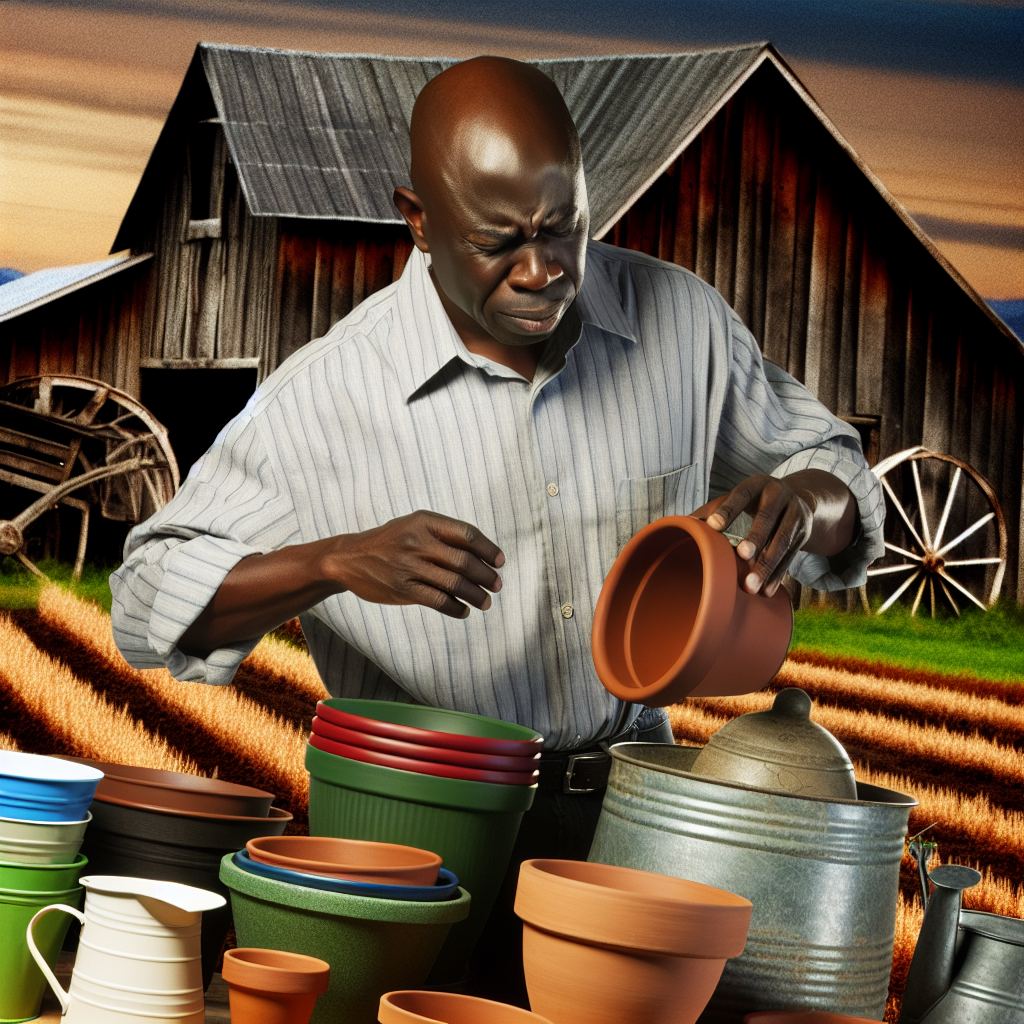
Environmental Considerations
Choosing Eco-Friendly Containers
Environmentally-friendly farming starts with the right containers.
These containers impact soil health, plant growth, and sustainability.
First, prioritize materials that minimize environmental harm.
Consider using biodegradable options such as bamboo or natural fibers.
These materials decompose naturally, enriching soil over time.
Recyclability and Reusability
Next, think about recyclability when selecting containers.
Showcase Your Farming Business
Publish your professional farming services profile on our blog for a one-time fee of $200 and reach a dedicated audience of farmers and agribusiness owners.
Publish Your ProfileLook for those made from recycled plastics or metals.
Recyclable containers help reduce waste in landfills.
Additionally, choose containers that you can reuse multiple times.
Reusing extends the lifespan of the materials and saves costs.
Impact on Plant Growth
Choose containers that promote healthy plant growth.
Containers should allow for adequate drainage and aeration.
Look for designs that help retain moisture without waterlogging.
Consider options with features that encourage root development.
This enhances plant vitality and productivity.
Local Sourcing
Supporting local businesses benefits the community and environment.
Source your containers from local manufacturers whenever possible.
This helps reduce transportation emissions and supports the local economy.
Local suppliers may also offer eco-friendly materials options.
Certifications and Labels
When selecting containers, look for environmental certifications.
Labels such as “USDA Organic” or “Green Seal” indicate sustainable practices.
These certifications assure you of the product’s eco-friendliness.
Furthermore, they often reflect commitment to quality and safety.
Cost-Effectiveness: Budgeting for Container Gardening
Understanding Your Budget
Establishing a clear budget is essential for container gardening.
Start by determining how much you can allocate for your plants.
Next, factor in the cost of containers, soil, and plants.
Always remember to include any additional supplies like fertilizers.
Conducting research on various price points helps in budgeting effectively.
Choosing Affordable Containers
Containers come in various materials and price ranges.
Plastic pots are typically inexpensive and lightweight.
Consider using recycled containers to save money.
Terracotta pots are charming but can be costly.
Wooden planters can be a budget-friendly option if you build them yourself.
It’s wise to compare prices before making a purchase.
Soil and Amending Costs
Quality soil is crucial for successful container gardening.
Bulk soil purchases often lead to savings compared to smaller bags.
Adding organic amendments can enhance soil quality.
Compost from your kitchen scraps can reduce costs effectively.
Consider making your own potting mix to save even more.
Long-Term Investment in Plants
Choosing perennial plants can be more cost-effective.
Perennials often return year after year, reducing re-purchase costs.
Researching native plants can provide options that thrive without much investment.
Consider seed-starting for a lower upfront cost versus buying established plants.
Investing in higher-quality plants may yield better results over time.
Evaluating Overall Costs
Track all expenses associated with your container garden.
Assess the returns on your investment from the produce or flowers yielded.
Showcase Your Farming Business
Publish your professional farming services profile on our blog for a one-time fee of $200 and reach a dedicated audience of farmers and agribusiness owners.
Publish Your ProfileAdjust your budget based on what works and what does not.
Keep records to refine future gardening efforts for more efficiency.
Ultimately, wise budgeting makes container gardening enjoyable and sustainable.
Adapting Containers for Indoor vs. Outdoor Planting
Choosing Containers for Indoor Planting
Indoor planting requires specific container considerations.
Opt for lighter materials to simplify movement.
Plastic and lightweight ceramic are excellent choices.
Ensure containers have drainage holes to prevent overwatering.
Consider decorative pots to enhance indoor aesthetics.
Choose sizes that fit your indoor space without overcrowding.
Additionally, select containers with insulating properties for temperature stability.
Selecting Containers for Outdoor Planting
Outdoor planting involves different container requirements.
Use heavier materials, such as clay or metal, to withstand wind.
Ensure containers are large enough to accommodate plant root systems.
Drainage is vital; choose containers with ample drainage holes.
Consider UV-resistant materials to prevent sun damage.
Also, ensure the containers offer temperature regulation for plants.
Understanding the Plant’s Needs
Different plants have varying container requirements.
Research specific plant species to determine optimal container types.
Some plants thrive in smaller, more confined spaces.
Others may require more expansive containers for root growth.
Adjust container type based on growth stage and plant size.
Regularly assess plant health to identify any needed changes.
Environmental Considerations
Choose eco-friendly materials whenever possible.
Consider using biodegradable pots for your plants.
Recycled materials can also make excellent container choices.
Analyze the environmental impact of your container choices.
Support manufacturers who prioritize sustainability in their production.
Maintenance and Longevity: How Container Quality Affects Plant Growth
Importance of Container Quality
The quality of your plant containers directly influences their durability.
High-quality containers can withstand various weather conditions.
Additionally, they often provide better insulation for the soil.
This helps maintain a stable temperature for plant roots.
Ultimately, quality affects plant growth and longevity.
Material Choices for Containers
Common materials include plastic, clay, metal, and wood.
Plastic containers are lightweight and resistant to cracking.
Clay pots are porous, allowing for excellent drainage.
Metal containers can heat up quickly, affecting root temperature.
Wooden pots offer an attractive option but may rot over time.
Maintenance Tips for Containers
Regular cleaning preserves the integrity of your containers.
Remove dirt and debris to prevent pest infestations.
Check for cracks and leaks to avoid water loss.
Showcase Your Farming Business
Publish your professional farming services profile on our blog for a one-time fee of $200 and reach a dedicated audience of farmers and agribusiness owners.
Publish Your ProfileUse liners in wooden or metal containers to enhance longevity.
Apply sealants to wooden containers to protect against moisture.
Choosing the Right Size
The size of a container impacts the growth potential for plants.
Smaller containers may restrict root growth and nutrient absorption.
Larger pots provide more space for roots to spread and grow.
Consider the mature size of plants when selecting container size.
Impact of Drainage on Plant Health
Good drainage prevents waterlogging, which can harm roots.
Ensure your containers have adequate drainage holes.
Adding gravel or stones at the bottom can improve drainage.
This promotes healthier plant roots and encourages growth.
Additional Resources
Starting a Flower Farm on a Budget: Affordable Tips and Smart …
Maximizing Production in Small-Scale Flower Farming: Tips for …

